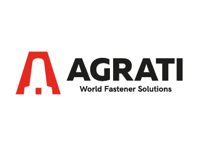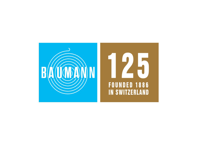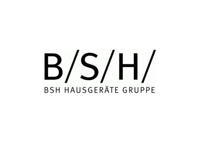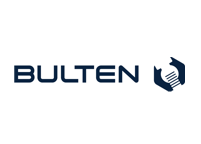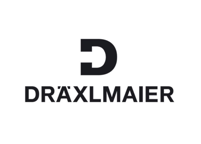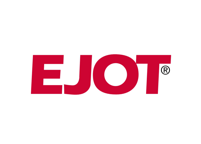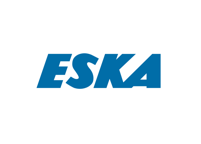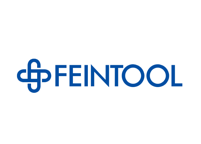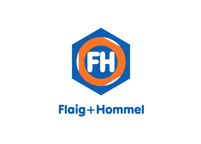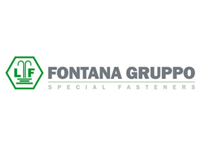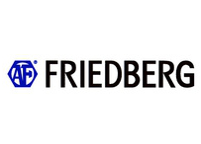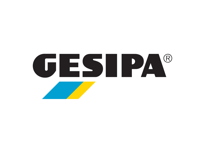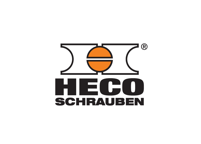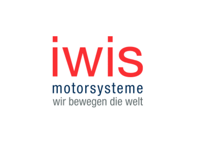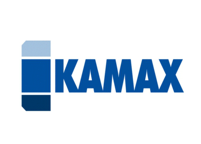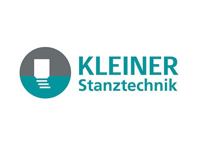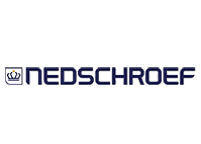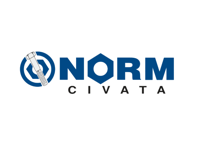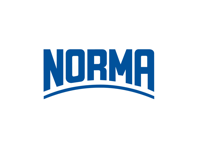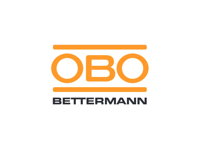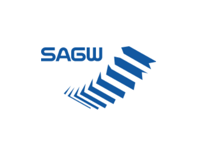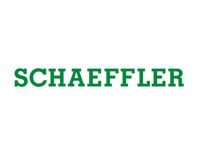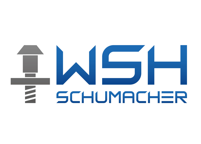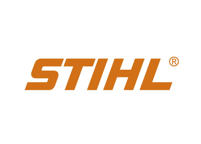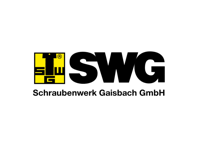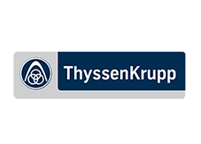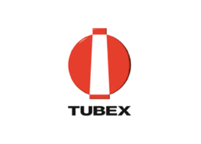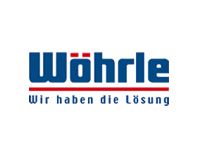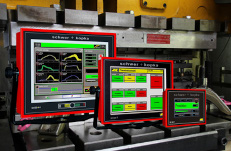
Testimonials
We are always happy to hear positive reports from our customers about working with the MES software SK-go! or the results achieved with the process monitoring systems on their machines. As part of the SK Reporter series, we were able to interview many customers and publish these reports.
Read how users from different companies rate our solutions and what they can do with it.
Linking MES and SPC ensures consistent Product Quality!
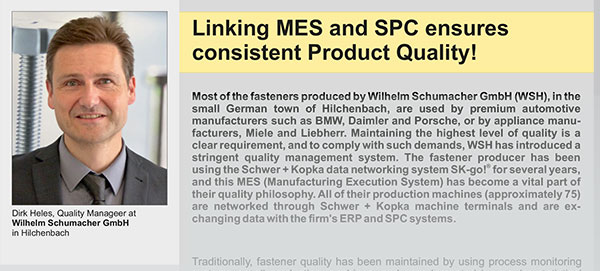
Most of the fasteners produced byWilhelm Schumacher GmbH (WSH), in the small German town of Hilchenbach, are used by premium automotive manufacturers such as BMW, Daimler and Porsche, or by appliance manufacturers, Miele and Liebherr. Maintaining the highest level of quality is a clear requirement, and to comply with such demands, WSH has introduced a stringent quality management system. The fastener producer has been using the Schwer + Kopka data networking systemSK-go! for several years, ® and this MES (Manufacturing Execution System) has become a vital part of their quality philosophy. All of their production machines (approximately 75) are networked through Schwer + Kopka machine terminals and are exchanging data with the firm'sERPandSPCsystems.
Traditionally, fastener quality has been maintained by using process monitoring systems on all production machines, and complemented by regular statistical dimensional inspections (SPC). Around 900 operator SPC inspections are carried out on a typical day at WSH. “Our main problem in the past has been that the SPC system was expecting a new SPC inspection after the prescribed interval, although the machine may not have produced over the entire time frame” recalls Dirk Heles, Quality Manager at WSH. “The “inspection-due” prompt generated by our SPCsystem was often not synchronized with the reality on the machine nor was it visible to the operator working on one of his machines. Hence, operators were not sure when the next inspection was really due. Other events such as shift changes, tool breakages or change-overs were causing further irregularities in the inspection intervals”. The final solution was to link MES and SPC using the SK machine terminals and SK-go! system.Now, the inspection frequency is determined by true ® machine running time, and if any required inspections are not carried out in the allowed time frame, the respective machine will be automatically stopped!
MES controls inspection intervals
Missed inspections and out-of-tolerance values cause the machine to stop
When the current inspection interval has elapsed, the machine terminal shows the message “SPC inspection due”. The operator now has a preset time frame within which he needs to complete the next SPC measurements. “When the allowed time frame has elapsed without seeing a valid SPC inspection, the machine is stopped immediately“ describes Dirk Heles of the stringent quality insurance procedure implemented at WSH. “The same stoppage occurs when the measured dimensions are outside of the described tolerances.The machine is only released for production after a new inspection with good results has been made, and the MES program has received confirmation from the SPC-system.”
Monitored inspection intervals with comprehensive documentation
“We now can easily prove, during the regular audits, that 100% of the inspections were performed as prescribed” explains Dirk Heles of the significant advantage of the installed package. “The SK-go! system ® gives us a graph for each produced job showing the stop/go chart of the machine and the times when SPC inspections were performed. This addresses any questioning that may arise from auditors asking about inspection interval delays caused by machine downtime”.
Expanding the use of data networking
WSH is making further use of the available data networking features to further improve product quality. SK-go! has already been expanded with the plant ® maintenance module to improve machine availability and function. Another step includes the introduction of the PTO module which manages full documentation and archiving of all relevant process data. “Our customers' audits are already getting good ratings due to our integral quality assurance system!” smiles Dirk Heles.
Small Enterprises also benefit from Data Networking Transparency!
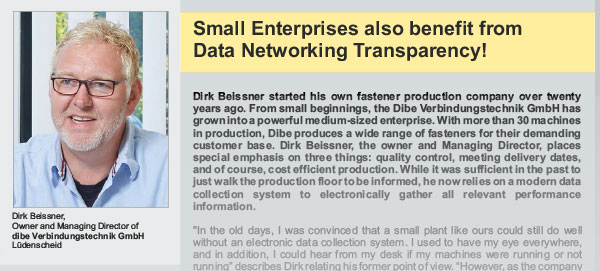
Dirk Beissner started his own fastener production company over twenty years ago. From small beginnings, the Dibe Verbindungstechnik GmbH has grown into a powerful medium-sized enterprise.With more than 30 machines in production, Dibe produces a wide range of fasteners for their demanding customer base. Dirk Beissner, the owner and Managing Director, places special emphasis on three things: quality control, meeting delivery dates, and of course, cost efficient production. While it was sufficient in the past to just walk the production floor to be informed, he now relies on a modern data collection system to electronically gather all relevant performance information.
"In the old days, I was convinced that a small plant like ours could still do well without an electronic data collection system. I used to have my eye everywhere, and in addition, I could hear from my desk if my machines were running or not running” describes Dirk relating his former point of view. “However, as the company grew and the batches became increasingly smaller with more frequent job changeovers, I began to realize that data collection was going to become a necessity. Often, I didn't really know which orders were currently running on my machines, or to what degree the orders had been completed.”
Transparency today is a must in industrial production processes
Even if the number of machines is few, it is even more important today to keep an eye on true machine performance. A single machine that is not running well has a significant impact on the average productivity of the entire production floor! It is important that every machine in a manufacturing department performs up to its potential. That's why Dibe finally decided to install the SK-go!® data networking system (MES) supplied by Schwer + Kopka.
"From the very beginning, we were using the Schwer + Kopka process monitoring systems on all of ourmachines, and could connectmost of themto the SK-go! data ® collection system” explains Dirk Beissner about his decision. “The connection between the process monitoring part of the system and the recorded productivity data has proven to be especially useful for us in a number of instances. Recently, we ran a part which took three times as long to finish as was planned although the same part had been made several times before with no problems. After checking the run time diagramof this job on our SK-go! system, we noticed frequentmachine stops ® caused by the process monitoring system. It was determined that the forming forces were varying too much and exceeded the envelope limits. It became clear that the job was set-up incorrectly by a less experienced operator who was not fully aware of the peculiar aspects of that machine and the tool set. The analysis of the collected data revealed exactly which reason caused the frequent shut downs. The job was then set-up by one of our experienced setters and the following order could be completed in the scheduled time frame. Without the clear indication from the SK-go!®production tracking, we would have continued fiddling around forever” said Dirk who is also excited about the achieved success. The findings were immediately discussed with all operators to prevent the same problem from happening again in the future.
Critical data analysis now is a daily routine
Dibe actively uses all the collected data to be alerted to unfavorable conditions in real time. “The SK-go! system allows us to set warnings limits for a number of ® different criteria” adds Karl Jeger who is the manufacturing manager at Dibe. ”For example, I receive an alert when a job is about to be completed which gives me ample time to deliver the tool set and the material for the next job. I also receive information indicating poor machine utilization, or if the machines are set to run at a slower speed than planned”.
Management's opinion of the SK-go! system is clearly positive: “We managed to ® significantly reduce the time loss between the termination of one job and the start of the next one. The exact knowledge about the true order processing based on the accumulated data allows us to analyze problems in detail and to initiate the correct remedial action. In addition, we now are able to answer our customers' questions relating to delivery dates at the press of a button, where previously, somebody had to go out on the shop floor and search for the machine running the job.”
Extending the use of data collection is already planned
The next step inmaking further use of the SK-go! data collection systemis already ® scheduled. Shortly, Dibe will also collect and analyse the actual tool usage via the system. Once an operator presses the down code “tool change,” he will automatically receive a tool list on the screen of his monitoring terminal. All he has to do is check off the exchanged tool on this list, and all information relating to this tool change is put into the data base including the number of parts made with this tool.” Management will then have the capability to review the life history of any tools tracked by the data base.
Close...Reliable Monitoring of Planetary Thread Rollers at 1800 parts/min.!
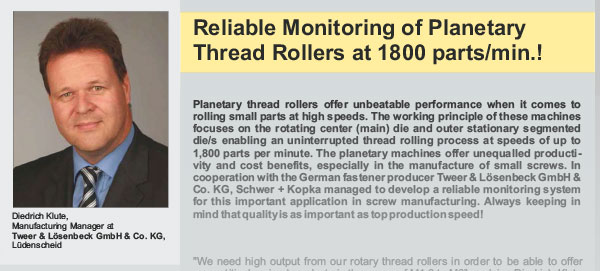
Planetary thread rollers offer unbeatable performance when it comes to rolling small parts at high speeds. The working principle of these machines focuses on the rotating center (main) die and outer stationary segmented die/s enabling an uninterrupted thread rolling process at speeds of up to 1,800 parts per minute. The planetary machines offer unequalled productivity and cost benefits, especially in the manufacture of small screws. In cooperation with the German fastener producer Tweer & LösenbeckGmbH& Co. KG, Schwer + Kopka managed to develop a reliable monitoring system for this important application in screw manufacturing. Always keeping in mind that quality is as important as top production speed!
"We need high output from our rotary thread rollers in order to be able to offer competitively priced products in the range of M1.6 to M6” explains Diedrich Klute who is the responsible manufacturing manager at Tweer & Lösenbeck. "We would have loved to run our rollers during unmanned shifts after the regular production period ends, which would reduce our costs even further. Unfortunately, a reliable monitoring solution for our high speed rollers was not available until recently. We had to sacrifice the idea of running unattended in favor of the quality aspects".
Improving quality and productivity at the same time
It came as a logical step to sit down with the experts of Schwer + Kopka (SK) to try to find a reliable and practical solution for this problem. "We have been using the SK load monitors for many years on all of our cold heading machines and know what we can achieve. Hence, we wanted to transfer the good results into the thread rolling department as well" describes Diedrich Klute regarding his motivations to expand the use of monitoring.
"The difficulty in monitoring the planetary rolling process in the past has been that typically, several parts are being rolled in between the dies at the same time. This has caused problems for conventional process monitoring systems when it came to detecting the different force readings for each rolled screw," summarizes the manufacturing manager. In addition, the traditional sensor concepts were not suited to deliver consistently strong sensor signals when rolling smaller diameter parts. The force signals were too weak and did not provide a good representation of the actual rolling process. "It took us a number of different approaches working with the technicians of Schwer + Kopka, but we have now developed a new sensor concept which works very reliably, and it is very easy to retrofit to all our existing machines" says Diedrich Klute. "The new SK system has been tested extensively over a period of several months. The measured roll force signals are stable and repetitive allowing us to run the monitor with very tight envelope limits. Quality is further supported using our specially designed sorting gates which are connected to the SK 400 load monitors. Whenever the monitor detects a “suspicious” force signal, the gate is activated to separate the defective part/s. Since the monitor has been installed on this machine, we have not found any undetected bad parts, nor have we had a single customer complaint.”
Expansion to all planetary rollers is in progress
The excellent results achieved with the initial test system have led to the installation of eight (8) more SK 400 load monitors on other planetary rollers. The machine operators also value the new monitoring technique and the simplicity of operation. Shortly, all planetary rollers at Tweer & Lösenbeck will be equipped with SK load monitors.
Close...Foxmatic detects cracked heads and eliminates costly sorting!
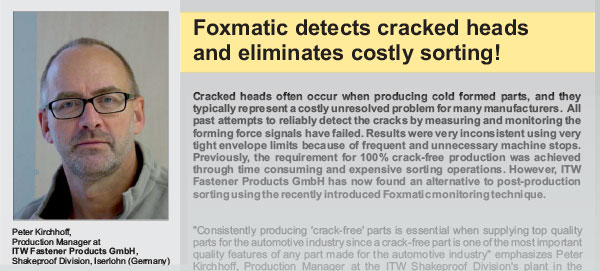
Cracked heads often occur when producing cold formed parts, and they typically represent a costly unresolved problem for many manufacturers. All past attempts to reliably detect the cracks by measuring and monitoring the forming force signals have failed. Results were very inconsistent using very tight envelope limits because of frequent and unnecessary machine stops. Previously, the requirement for 100% crack-free production was achieved through time consuming and expensive sorting operations. However, ITW Fastener Products GmbH has now found an alternative to post-production sorting using the recently introduced Foxmatic monitoring technique.
"Consistently producing 'crack-free' parts is essential when supplying top quality parts for the automotive industry since a crack-free part is one of the most important quality features of any part made for the automotive industry" emphasizes Peter Kirchhoff, Production Manager at the ITW Shakeproof Division's plant in the German city of Iserlohn. "We produce about 70 million pieces per year of a critical part which are then distributed by our customer from a central warehouse to production facilities all over the world. When a problem occurred in the past, it was virtually impossible for us to track suspect batches and allocate them to a certain production lot. Therefore, ITW was forced to have their annual production sorted by an external supplier to ensure 100 % crack-free products. The sorting cost for just this one part is approximately € 140.000 per year!”
Many machine stops due to extremely tight envelope limits
It was imperative for Peter Kirchhoff to identify a more economical crack detection solution. "For years, we have been using the Schwer + Kopka load monitoring systems on our cold forming and thread rolling machines, and we have been seeing excellent results with them" reports the Production Manager. "Working with the S+K technicians, we had been looking at the cracked head problem for quite some time trying to detect them with our existing monitoring systems. By installing the sensors closer to the tools and by developing more sensitive algorithms, we were able to detect more and more cracks at the expense of more frequent nuisance machine shut downs. Eventually, the operators would just widen their envelope settings to keep their machines running. We had to admit that the extremely tight envelope limits necessary for good crack detection could not be run economically on our machines." This is exactly why reliable detection of cracked heads was impossible in the past.
Foxmatic detects errors inside the envelope - even with less sensitive control limits
The new Foxmatic approach developed by S+K created new opportunities because it is capable of detecting very small changes in the force signal pattern even when inside the envelope band. Extensive tests carried out on a number of different machines revealed where the typical small changes in the force pattern occurred caused by the cracked heads. The new Foxmatic software tracks the changes in the force patterns and ensures the reliable detection of cracked heads. Peter Kirchhoff adds: "Although we were able to detect the bigger cracks with the previous system, since we implemented the use of Foxmatic, we know that we are producing 100 % crack-free parts. To verify our findings, we took several production lots which were monitored by Foxmatic and had them sorted for cracks. And do you know what? -We did not find a single crack in those lots. Since then, we have entirely eliminated the costly outside sorting operation!"
Pay-Back in a few weeks
By being able to eliminate additional crack sorting, the future path became clear. "The investment into the SK monitoring systems with Foxmatic paid for themselves in just a few weeks" says Peter Kirchhoff about this economical decision. "The new SK monitoring systems with Foxmatic offer highly reliable capabilities in error detection, and we will equip more machines with this technology. The next machine targeted for a new SKSystem is a recently rebuilt 3-die cold former.”
Close...Reliable detection of even the smallest tool breakages and chips!
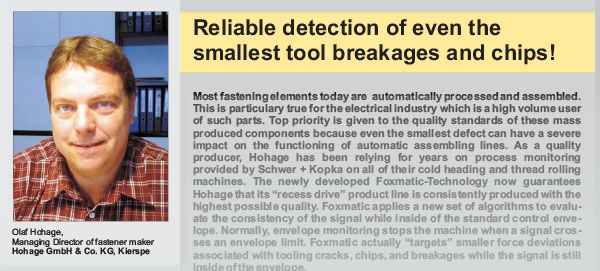
Most fastening elements today are automatically processed and assembled. This is particulary true for the electrical industry which is a high volume user of such parts. Top priority is given to the quality standards of these mass produced components because even the smallest defect can have a severe impact on the functioning of automatic assembling lines. As a quality producer, Hohage has been relying for years on process monitoring provided by Schwer + Kopka on all of their cold heading and thread rolling machines. The newly developed Foxmatic-Technology now guarantees Hohage that its “recess drive” product line is consistently produced with the highest possible quality. Foxmatic applies a new set of algorithms to evaluate the consistency of the signal while inside of the standard control envelope. Normally, envelope monitoring stops the machine when a signal crosses an envelope limit. Foxmatic actually “targets” smaller force deviations associated with tooling cracks, chips, and breakages while the signal is still inside of the envelope.
Small issue - major impact: breakages and chipping of heading punches
“The integrity of the recess drives on our parts such as slots, cross slots or combinations thereof are of the utmost importance”, states managing director Olaf Hohage referring to the significance of this quality feature. “Even small imperfections are causing huge problems on assembling lines because our customers cannot tighten the fasteners properly. Unfortunately, many recess punches have the tendency to fail prematurely before reaching their usual wear limits. Even small chips render the parts unusable because the fastening bits cannot fully enter into the recess and are unable to transmit the required torque.”
Foxmatic convinces across the board
It is the goal of all fastener makers to be able to detect these recess tool failures by using process monitoring systems. “Unfortunately, we have to state that the changes in the forming forces caused by these errors are so minute that even perfectly set envelope limits are incapable of seeing the defects” describes Olaf Hohage. ”But there is a solution now: we have tested the new Foxmatic technology introduced by Schwer + Kopka on several cold heading machines, and we are truly surprised how reliably Foxmatic reacts to even the smallest errors.We, as well as most experts in the industry thought that detecting such errors would be impossible!”
Obviously, such enhanced error detection mandates that all relevant process parameters such as material quality, machine condition, and tooling set-up are kept under control. The lead set-up man at Hohage Fasteners is Waldemar Hihs, who has been with the company for more than 12 years. He knows that his machines must operate consistently with the least amount of variation possible in order to achieve good results. “Due to near perfect error detection using , unwanted machine stops are virtually eliminated” explains Waldemar. “We don't need to set the envelope limits extremely tight any more, because is searching for our errors inside the envelope band!”
A big step towards zero-defect-quality
“We are now in a position to supply our customers with an even higher standard of quality” states Olaf Hohage summarizing the results achieved by having implemented the Foxmatic-technology. “In addition, we have reduced our production costs significantly. We are now using our tools until the” true end” of their life instead of changing the punches prematurely just as a precaution. Additionally, we now avoid producing part batches that are contaminated by just a few bad parts which used to go through undetected. We now are introducing Foxmatic to our thread rolling machines and are eager to find out which types of rolling defects will be detected by the new technology.
Hohage - Small error detection - EN
Close...Fastener factory with more than 120 machines interfaces directly to SAP!
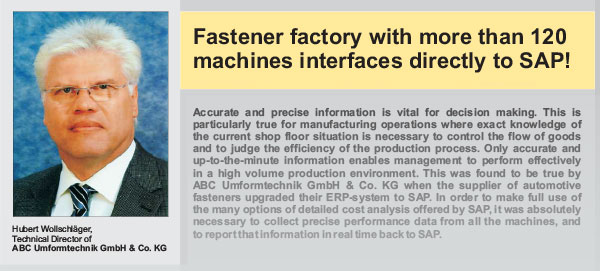
Accurate and precise information is vital for decision making. This is particularly true for manufacturing operations where exact knowledge of the current shop floor situation is necessary to control the flow of goods and to judge the efficiency of the production process. Only accurate and up-to-the-minute information enables management to perform effectively in a high volume production environment. This was found to be true by ABC Umformtechnik GmbH & Co. KG when the supplier of automotive fasteners upgraded their ERP-system to SAP. In order to make full use of the many options of detailed cost analysis offered by SAP, it was absolutely necessary to collect precise performance data from all the machines, and to report that information in real time back toSAP.
ABC had used a data collection system that was collecting information such as machine up time, machine down time and the number of parts produced, and reporting data back to its' ERP-system. After implementing SAP, it became clear that all data collection and reporting procedures needed updating to be more complete. „Our main target was to get an accurate summary of all production efficiency data from the active jobs that were running”, recalls HubertWollschläger, the technical director of ABC Umformtechnik. This had to include a correct scanning of the material used and accurate recording of losses such as set-up and production scrap. ABC's control specifications required that the time the operators spent attending to a machine and the machine up time be included in calculations detailing true personnel cost for each running job
Same terminal for data collection and machine monitoring
Another central requisition demanded that machine data collection and process monitoring be performed by the same terminal so operators had to learn one new system rather than two.
All targets are fully met
"We summarized all of our requirements in a detailed specification list and forwarded this to several potential suppliers", remembers Hubert Wollschläger relative to the procedure to select the right vendor. "It became clear that Schwer + Kopka proved to be a knowledgeable specialist for our industry and were able to meet most of our requirements with their standard solutions. The basic version of the SK-go! data collection system gave us an array of practical and useful tools for process and statistical analysis. In addition, Schwer + Kopka provided us with a clear path for integration into the SAP data world. We met in several workshops and specified the final concept together with them".
Universal hard and software concept made decision easy
ABC's decision in selecting Schwer + Kopka was facilitated by the innovative design of the process monitoring systems and data terminals recommended for the project. Today, all machines are equipped with the process monitoring models SK400 and SK 800. Each system uses piezo-electric sensors to measure the forming forces involved to forge or to roll the parts, and monitor those signals with dynamic envelope control limits. Typical process errors such as tool breakage will be detected by the SK system causing the machine to immediately stop. This will prevent batch contamination and protect the machine and tooling against overload damage. All systems offer an easy-to-use touch screen user interface.
The SK process monitoring units are fitted with integrated RFID readers. The operators use their existing RFID personnel chip to “log in” at the machine terminals when they start their shift. The terminals at the machines have an additional bar code reader which is used to scan each material batch. The SK-go!-system verifies, on-line, if the scanned batch number is properly allocated to the current job. All machine up and down times and the number of parts made are automatically reported by the SK process monitoring system in real time. All the operator has to do is to start the job from a list shown on his terminal's screen, and assign a stop code whenever the machine is down. ABC particularly liked the idea that down codes must be entered after a predetermined amount of down time. This ensures that collected reasons are valid and represent viable statistics.
Electronic scales record losses
The true volume of produced good parts is taken from electronic scales after every work step. The scales are integrated into the data collection systems by special data interfaces programmed by Schwer + Kopka. The actual amount of scrap is also automatically calculated by taking the difference between the number of “parts-made” signals generated by the monitoring systems minus the number of parts actually sorted as scrap and weighed by the scales.
Data terminals link all machines to SAP
All other machines in secondary machining, trimming, pointing, wire drawing, assembling, sorting, heat treating and coating are also integrated into the data networking system. All machines not suitable for a process monitoring system were equipped with standard data terminals, the models SK 200 T and SK 600 T. The terminals have “parts-made” pulse inputs which are used to report the current state of the machine and a count of the number of produced parts. Currently, more than 120 production machines are linked wireless (W-LAN) to ABC's factory network to report their data in real time toSAP.
Entire system completed in just 10 months
How does ABC now judge the transition into the new data collection system, and how are the results? As stated by Hubert Wollschläger: "From the onset, the transition from the old to the new system went extremely smoothly considering the fact that a huge number of machines had to be equipped with new terminals and monitoring systems. My initial expectations with respect to desired hardware and software solutions were fully met by SK's uniform and modern terminal design. This proved to facilitate the learning curve for our operators across the board. In addition, we had set a very ambitious time frame for completing the entire project. Less than 10 months elapsed between our first contact with Schwer + Kopka and the complete installation of all hardware and software components. Today, we benefit from the mutual preparation work done and we get the transparency of information we need. We now have a truly on-line comparison between planned targets and actual performance which gives us an excellent view on our true costs".
Use of system will be expanded
It's well known that an appetite for improvement grows as you hunger for more success, and this is also true for ABC Umformtechnik. "We are planning to expand the use of the SK-go! system", adds Hubert Wollschläger. "The next step includes integration of all tooling data in order to get a detailed survey of our actual tool consumption including exact tool lives, and we intend to plan and report all maintenance work via the system".
Close...Life of Thread Rolling Dies Increased Five Fold!
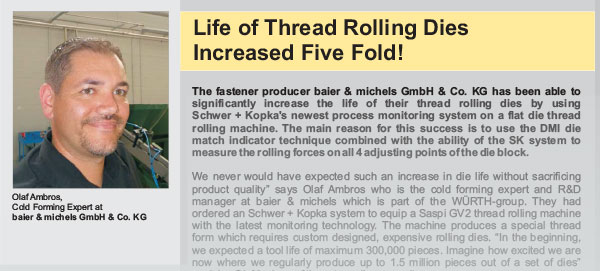
The fastener producer baier & michels GmbH & Co. KG has been able to significantly increase the life of their thread rolling dies by using Schwer + Kopka's newest process monitoring system on a flat die thread rolling machine. The main reason for this success is to use the DMI die match indicator technique combined with the ability of the SK system to measure the rolling forces on all 4 adjusting points of the die block.
We never would have expected such an increase in die life without sacrificing product quality” says Olaf Ambros who is the cold forming expert and R&D manager at baier & michels which is part of the WÜRTH-group. They had ordered an Schwer + Kopka system to equip a Saspi GV2 thread rolling machine with the latest monitoring technology. The machine produces a special thread form which requires custom designed, expensive rolling dies. “In the beginning, we expected a tool life of maximum 300,000 pieces. Imagine how excited we are now where we regularly produce up to 1.5 million pieces out of a set of dies” explains OlafAmbros of the extraordinary results.
It is important to reproduce good machine set-ups which previously resulted in good thread quality, using the lowest amount of force on the dies. Schwer + Kopka's thread roll monitoring systems offer innovative techniques such as DMI (die match indicator) and Part Data Memory which stores the force curves on all 4 adjusting points of the die block. The experts of baier & michels use these features extensively to get in-depth views into the forming process and improve die settings.
Olaf Ambros adds: „Repeating good die set-ups is the most important aspect to achieve long tool life. The Schwer + Kopka process monitoring system enables us to repeat optimum die set-ups,even when we use the dies for several production runs. The obtained savings are impressive and worth every cent of the nvestment. In the meantime, we have equipped more machines with process monitoring systems by Schwer + Kopka!”
Baier & Michels - Tool Life 5fold - EN
Close...






